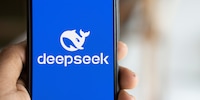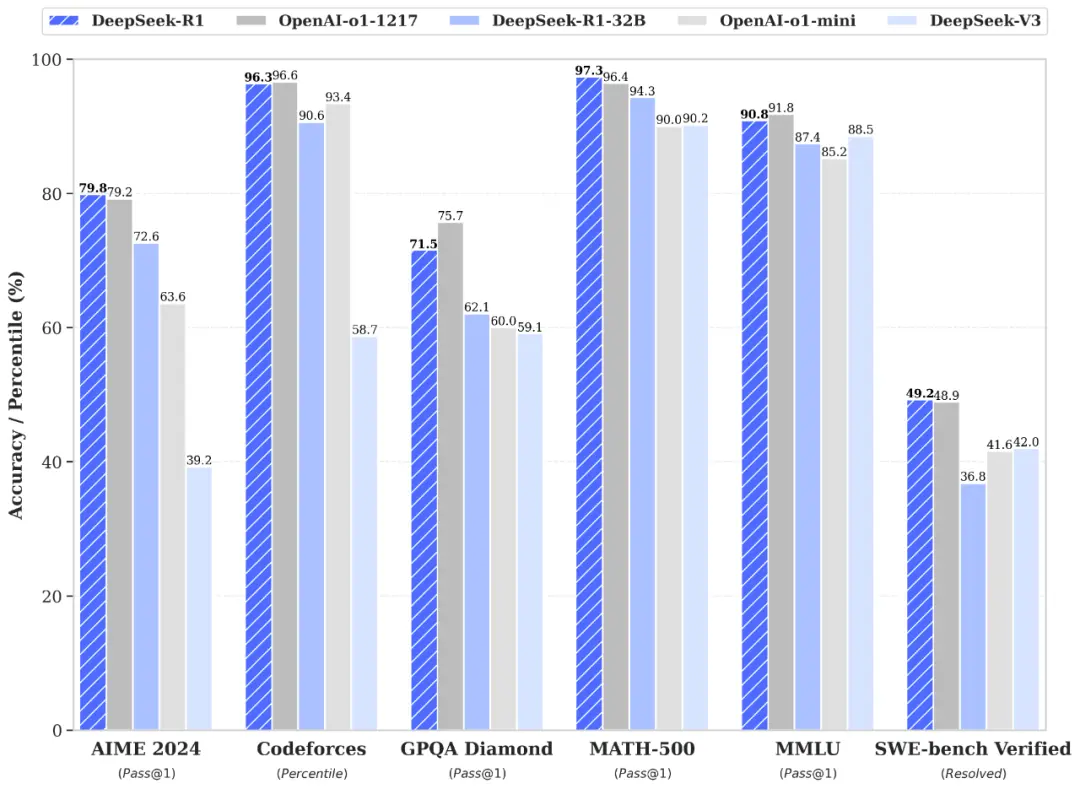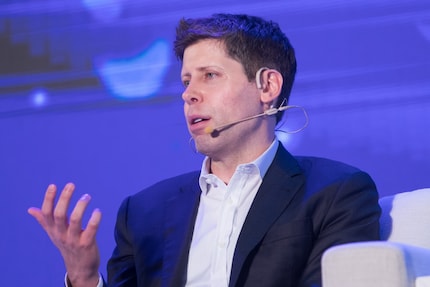
News + Trends
DeepSeek: Chinese AI model makes Wall Street tremble
by Samuel Buchmann

Chinese chatbot DeepSeek has been making waves in the tech world over the last week. But what’s all the fuss about? Who’s behind this new AI? And is the model really open source? Here are the answers to the most pressing questions about the technology so far.
Last week, an artificial intelligence (AI) from China caused quite the stir. Seemingly out of nowhere, DeepSeek shot to the top of app store charts, triggering panic in Silicon Valley. Now that the dust has started to settle, we’re a little more clued in about the technology. Time for a rundown of what we know so far.
DeepSeek is a free AI chatbot with a similar feel to models such as ChatGPT. It’s available as a browser version and as an app. The bot’s based on DeepSeek R1, an AI model that can «think» logically (reasoning engine). New versions of ChatGPT (OpenAI o1) and Google Gemini (Gemini 2.0 Flash Thinking) can do this too.
DeepSeek claims it can compete with the best US AI models across various benchmarks. Opinions are mixed among users and independent experts, who say either DeepSeek or another AI could deliver the best results, depending on the application. What they do agree on, though, is that the Chinese AI is capable of going toe to toe with established models. It’s particularly strong in technical tasks such as coding.

Sort of. You can download the model and run it locally yourself. The thing is, DeepSeek R1 is only open weight. So, while the data it uses to generate answers (weights) are publicly accessible, the underlying algorithms and training data are kept under wraps. In a true open-source model, these would be open too.
The only other large open-weight model is Meta’s Llama. OpenAI, Google and Anthropic don’t disclose any of their bots’ source codes. A group on the platform Hugging Face is already trying to reproduce a fully open version of DeepSeek. Open-weight – and open-source models in particular – can serve as foundations for new chatbots, making their development easier and cheaper.
That’s a question of perspective. OpenAI and Microsoft have launched an investigation into the issue. Reportedly, they have evidence that DeepSeek obtained large amounts of data from ChatGPT via a developer account at the end of 2024. It’s likely the company then used this data to train its own model.

This technique, known as distillation, violates ChatGPT’s terms of use. Although developers are allowed to integrate OpenAI’s models into their own applications via an interface, they’re prohibited from using them to build competing products. Whether or not this can be legally enforced, however, is another matter.
The irony in all this? OpenAI, Google and others have combed the entire internet without permission to train their own models, presumably violating a ton of copyrights in the process. The T in ChatGPT also stands for «Transformer», a model originally developed by Google. With this in mind, my sympathy for Sam Altman is pretty limited.
According to DeepSeek’s guidelines, the online versions of the model gather loads of user data. This includes:
DeepSeek uses all this information to improve the «security and stability» of its services. However, it may also share the data with advertising partners and store it «for as long as necessary».
Other chatbots also collect data. Guidelines published by OpenAI and Google make for similar reading. DeepSeek’s headquarters in China, however, have caused alarm bells to ring even more. The jury’s out on whether or not this is justified. Italy has blocked the app, while Australia’s Science Minister Ed Husic has urged caution over the chatbot.
A more tangible issue is the platform’s censorship of issues considered politically sensitive in China. The bot blocks queries about Tiananmen Square, Tibet or Xi Jinping, but readily provides information about other political figures. Tricks can be used to get around these restrictions, but the answers still seem to have a political flavour.
DeepSeek isn’t the only AI model accused of censorship. All major chatbots avoid certain topics, such as violence and sexuality. What’s more, OpenAI has faced [accusations] (https://www.forbes.com/sites/ariannajohnson/2023/02/03/is-chatgpt-partisan-poems-about-trump-and-biden-raise-questions-about-the-ai-bots-bias-heres-what-experts-think/) of political bias.
An engineer and entrepreneur named Liang Wenfeng. The Chinese counterpart to Sam Altman was born in Zhangjang in 1985 and attended the renowned Zheijang University. In 2015, he co-founded the hedge fund High-Flyer with two friends and made a fortune through AI-supported trading. At times, High-Flyer was managing almost 14 billion US dollars.

In 2023, Liang Wenfeng founded DeepSeek using the profits from his hedge fund. He put together a team of young talent and bought AI accelerators on a grand scale. The 40-year-old is considered a tech-focused ideologue. He’s keen for China to catch up with the US on AI, and has announced his ambition to develop Artificial General Intelligence (A.G.I.). So far, he doesn’t appear to have any direct connection to the Chinese government.
Wall Street has invested trillions of US dollars in Big Tech over the past two years in the hope that AI will lead to high profits in the future. However, that calculation will only work out if Microsoft, Google and the like are eventually able to sell their chatbots at a high price. DeepSeek’s calling both this business model and US dominance into question. Renowned venture capitalist Marc Andreessen has described R1 as «AI’s Sputnik moment».
DeepSeek R1 is AI’s Sputnik moment.
The biggest shock for investors has been that DeepSeek reported development costs of just 5.6 million US dollars for R1 and relatively few GPU hours for training. Until now, the conventional wisdom has been that a good model requires vast amounts of capital, know-how, time and energy. OpenAI’s GPT-4o cost over 100 million, while Anthropic has reported that its Claude training model cost between 100 million and one billion.
The US models require the latest H100 GPUs from Nvidia. In China, an export ban theoretically means that only older H800s are available. Even so, there are indications that DeepSeek bypassed restrictions to get its hands on H100 accelerators, which it at least used for training its model. The AI reportedly runs on Huawei chips.
Analysts have been discussing this question to death. On the one hand, DeepSeek might’ve been a little creative when it comes to reporting the cost of its model. The technology also seems to be at least partly based on US innovations. On the other hand, independent experts are impressed by DeepSeek’s efficiency. Thanks to clever solutions, the model achieves performance at OpenAI o1-level with significantly less computational effort.
At the very least, the whole affair demonstrates that market-leading chatbots are fairly easy to copy. It remains to be seen whether DeepSeek will manage to establish itself as a top, long-term player. Incidentally, OpenAI and other platforms’ server farms haven’t suddenly become worthless. They’ll remain crucial in driving AI forward. By Friday, the US companies’ share prices had recovered slightly after their initial crash.
However, the strength of the market’s reaction illustrates how nervous investors are. Over the past few years, valuations of AI-related companies have only ever moved in one direction: upwards. The average price-to-earnings ratio of Nvidia, Alphabet, Microsoft, Meta and Amazon is 38 – almost twice as high as the average of the 500 largest US companies (S&P 500 Equal Weight). Depending on your point of view, expensive tech stocks are an investment in the future or a house of cards. In all likelihood, the truth lies somewhere in between.
My fingerprint often changes so drastically that my MacBook doesn't recognise it anymore. The reason? If I'm not clinging to a monitor or camera, I'm probably clinging to a rockface by the tips of my fingers.
Interesting facts about products, behind-the-scenes looks at manufacturers and deep-dives on interesting people.
Show all